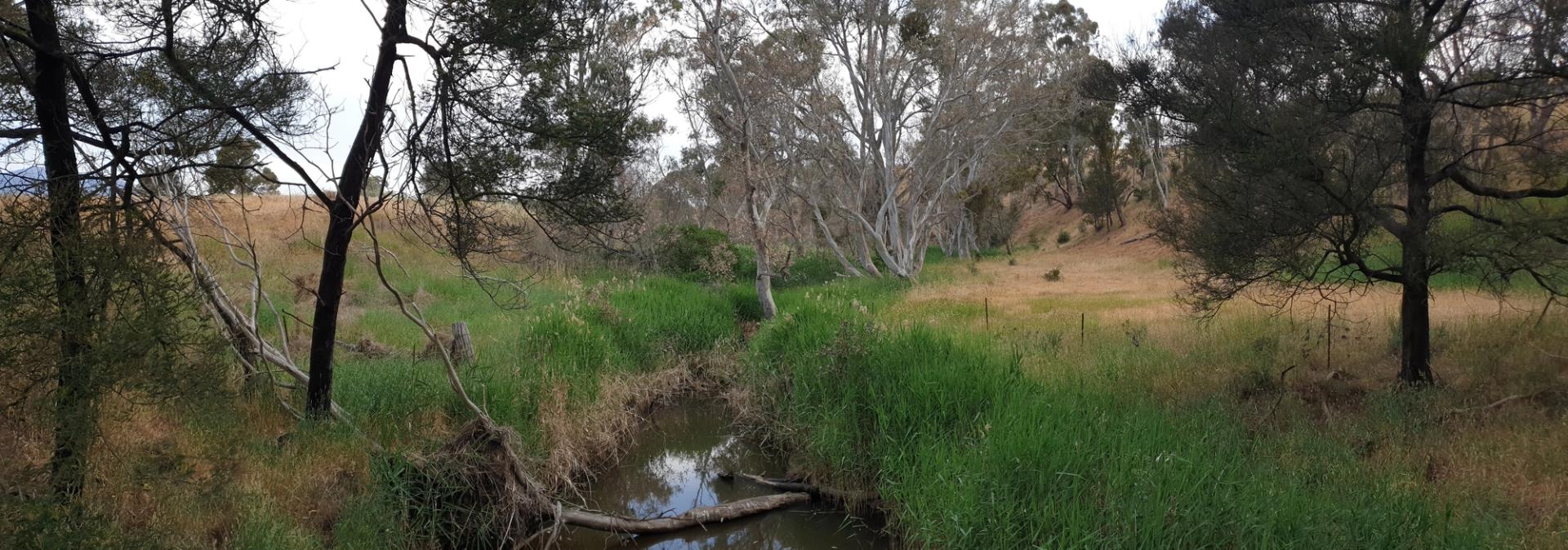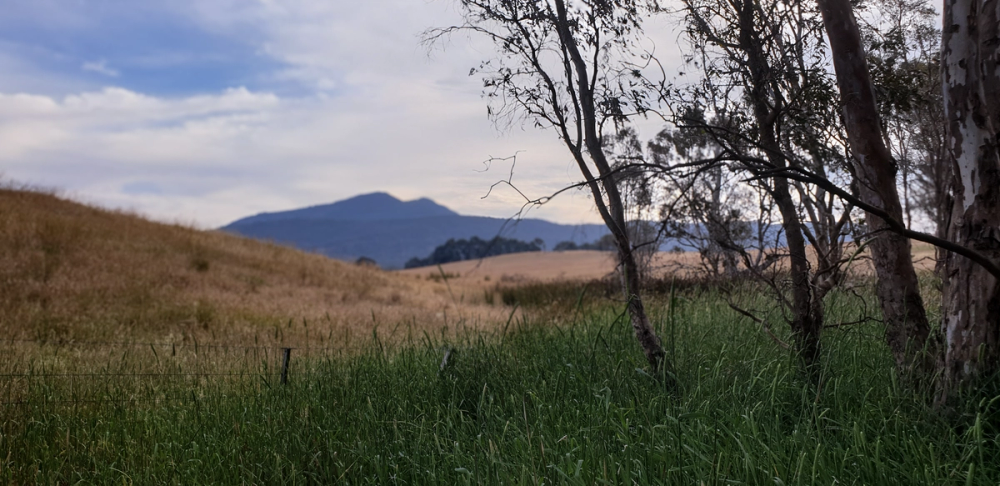30 November 2023
Have you heard of the Mount Cole Creek Restoration project? It was launched last year, after $100,000 was secured through the Murray-Darling Healthy Rivers Program. The first year of the project is now concluded, and to mark the next round, we held a community information and feedback session in Warrak on November 23rd. The Project Platypus team shared updates on what's been done so far, and plans for the coming year, which includes a survey of the Mt Cole Creek using environmental DNA technology.
Why does Mt Cole Creek need 'restoring'?
The Mt Cole Creek was once a healthy ecosystem, supporting a number of threatened species like Platypus, River Black Fish, Mountain Galaxias and Pigmy Perch. Recollections of local people include tales of fishermen travelling to the area to catch Black Fish from the creek that would flow for most of the year. In one lifetime, we have lost these iconic residents due to erosion damage, weeds, and declining water levels as a result of drought and reduced flows from Mt Cole reservoir. Fortunately, Mount Cole Creek does still support several native fish species and the threatened Western Swap Crayfish. The frame work of a healthy ecosystem is still there; but we must enhance and protect the remaining habitat to ensure the native species still calling the creek home can flourish.
Project Platypus manager, Dr. Mark McLean, kicked off the evening with a presentation summarising works in the creek so far. This has focused on improving habitat through invasive plant and animal control to decrease competition and predation. It also involved a round of creek surveys in 2019, using standard electrofishing techniques as well as a small amount of sampling using environmental DNA (or eDNA). Unfortunately, platypus were not detected during this limited amount of eDNA sampling, but it hasn't doused hopes from locals, and we have been keen since then to expland the survey area.
Thanks to funding recently awarded by Pacific Blue's Crowlands & Challicum Hills Community Fund, we are ready to launch a more comprehensive eDNA survey of the creek. Environmental DNA technology allows us to survey creeks without using electofishing or trapping, which can be highly invasive, costly and stressful for animals trapped. Instead, all it requires is sucking a bit of water out of the creek using a special syringe, and then sending the water off to a lab for analysis. The speed of this methods means we can test significantly more sites along the creek than we could conduct live trapping at.
We are starting these 'eDNA' surveys before Christmas, using kits from local Australian company, enviroDNA. We will start with a few focus species, including growling grass frog, rakali, dwarf galaxids, and of course our holy grail, platypus. The analysis will look for any DNA from species floating around in the water, coming from shed some skin, fur, or of course, poop! This test is so sensitive it has even been used to identify insects that have walked across the surface of flower petals! Even that brief interaction leaves behind trace amounts of DNA that we can detect.
Project Platypus' Program Manager, Lachlan McIntrye then shared another key part of the next year's work - the construction of a habitat pool, to provide more refuge spaces in the summer as water levels decline. The pool will be constructed near Warrak (the design process of which will be completed by March 2024). Moreover, additional erosion control works are also planned to commence April 2024, aiming to reduce the sedimentation of the creek which has been filling in important habitat pockets along the creek edges, and contributing to the spread of phragmite reeds which further choke out habitat sites.
Finally, Luke Austin from the Wimmera CMA updated us on the installation of a water outflow station that will be installed to allow water to be released from the reservoir into the upper Mount Cole Creek. This will allow the CMA to release additional water into the creek to combat declining water levels in the summer. We were all excited to hear this, and look forward to more updates.
If you missed this community session, not to worry! We will be holding another in the new year, after we finish the eDNA testing, so that we can share the results. We will also be sharing the plans for the habitat pool to get feedback.

Elia Pirtle
Landcare Facilitator

